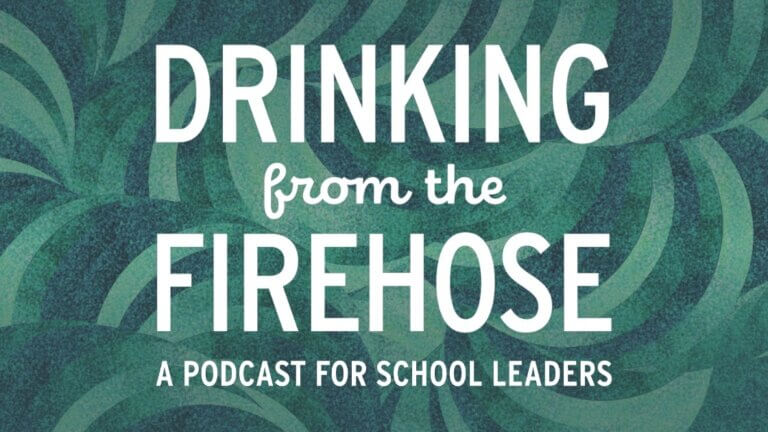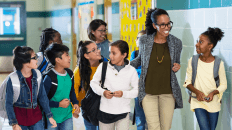Creating a culturally responsive school takes work⏤from disrupting traditional leadership pipelines to building equity in student resources. In episode 2 of our Drinking from the Firehose podcast, principal Katrina Bailey shares some strategies.
Audio Transcript
Download the full audio transcript.
Ellen Willoughby:
Hi, everyone. Welcome to Drinking From The Firehose, a podcast for school leaders. I’m your host, Ellen Willoughby. Being a campus leader can feel like you’re drinking from a firehose with all the information requests, tasks, and duties that are thrown your way on a daily basis. So how do you manage to do it all and help students grow? Well, that’s what this podcast is all about.
Today our guest is Katrina Bailey she is the Principal of Caraway Elementary in Round Rock ISD.
Hi, Katrina. Welcome to the podcast.
Katrina Bailey:
Hi, thank you for having me. I’m so happy to be here.
Ellen Willoughby:
Well, we are really excited, and we want to go ahead and just start off by having you share your definition of a culturally responsive school and why it is important to create culturally responsive schools?
Katrina Bailey:
Well, that is a really, really great question and so relevant in today’s world, in just our global world, global society, and our approach to schools. And so, a culturally responsive school is one that uses the cultural knowledge of their community, of their students’ prior experiences, the staff’s prior experiences, and the diverse learning styles that students bring to the classroom to make learning more engaging and more effective for students.
Ellen Willoughby:
Great. And tell me a little bit about what that looks like?
Katrina Bailey:
So in the classroom, if I’m a classroom teacher, I would be surveying my students to understand their unique experiences, their backgrounds. I think that’s the first thing that we do. You know, at the beginning of the school year, you get that class list, and you’re looking to see who’s in your classroom. You’re looking at those 20, 22 faces, 25 faces, I think sometimes in cases that are going to be in your classroom and you’re going through… And you’re doing your background. I think that that’s important. I think it’s important to understand who’s coming into your classroom so that you can create a space where they feel comfortable. So I think it’s doing your background as a teacher to understand who’s going to be in your space, so that to know what they’re going to bring, the cultural capital that they bring to the learning environment and recognizing that it’s important in planning and designing learning experiences and making that class a community.
So I think that that’s the first step is just understanding. It’s surveying, it’s asking students how best they learn. I think it’s asking students what makes them comfortable in a classroom space and really what they hope to get out of the year so that you can design your learning experiences around that. Around building that community and making sure that you are bringing in the students’ cultural backgrounds, their experiences to the table because I think it’s also not making assumptions about what students do and do not know, but it’s also recognizing the brilliance that they bring into your classroom every single day as well…
Download the full transcript.
Ellen Willoughby is a Project Coordinator for Educator Evaluation and Leadership here at Region 13.





Add comment